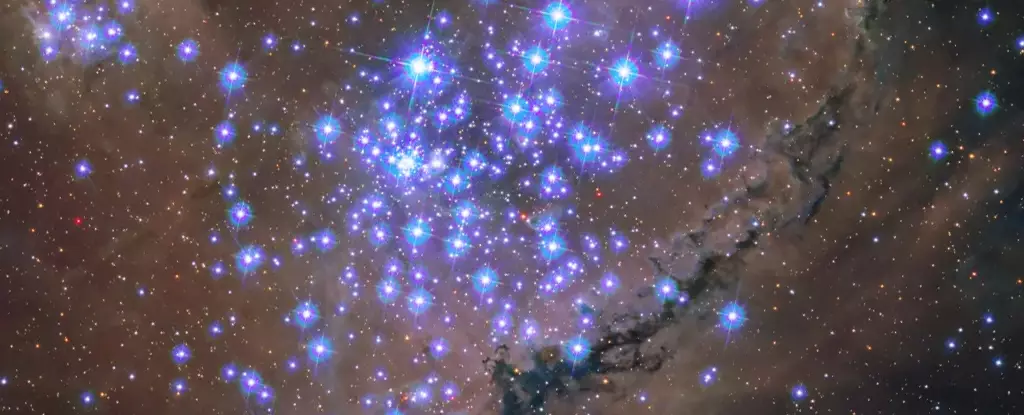The Small Magellanic Cloud (SMC), a dwarf galaxy located just outside the Milky Way Galaxy, is a significant area of interest for scientists. With a diameter of about 18,900 light-years and approximately 3 billion stars, the SMC, along with its counterpart the Large Magellanic Cloud (LMC), orbits the Milky Way as satellite galaxies. Researchers are especially intrigued by these satellites as they provide valuable insights into star formation and the evolution of galaxies through mergers.
One of the notable features within the Small Magellanic Cloud is the stunning star cluster known as NGC 346. Situated near the center of the brightest star-forming region in the SMC, the hydrogen-rich nebula called N66 adds to the allure of this cluster. Recently, NASA unveiled a new image of NGC 346 captured by the powerful Hubble Space Telescope, offering a captivating view of this star cluster.
Unveiling the Intricacies of NGC 346
The images obtained by the Hubble Space Telescope reveal the intricate details of NGC 346, showcasing the interaction between numerous hot, young, blue stars and the surrounding dust and gas. This region stands out as one of the most dynamic and detailed star-forming clusters ever observed, demonstrating the complex process of star formation.
Insights into Star Formation and Galaxy Evolution
By combining ultraviolet and visible light data from the Hubble Space Telescope’s Advanced Camera for Surveys (ACS) and Wide Field Camera 3 (WFC3), scientists aim to gain a deeper understanding of star formation and its impact on the interstellar medium (ISM) in galaxies with low metallicity like the SMC. These conditions are believed to replicate the early Universe when heavy elements were scarce, and the first stars and galaxies began to form, eventually enriching the cosmos with heavier elements.
After more than three decades in space, the Hubble Space Telescope continues to revolutionize our understanding of the Universe. By providing unprecedented views of celestial objects like NGC 346 in the Small Magellanic Cloud, Hubble plays a crucial role in advancing our knowledge of star formation, galaxy evolution, and the origins of the cosmos.


Leave a Reply